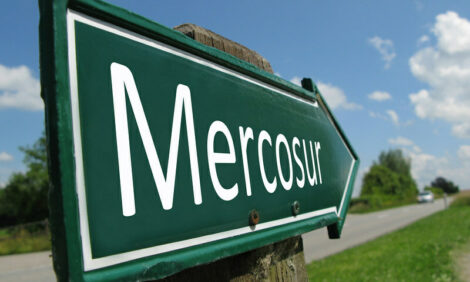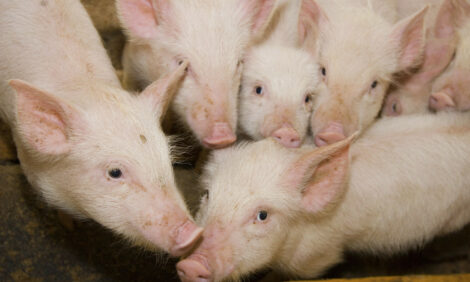



Exports to Slow as Rise in EU Pig Production Continues
ANALYSIS - European pig production grew by 2.5 per cent last year on top of a one per cent rise in 2014 largely driven by growth in the EU’s leading producers Spain and Germany.In 2015, Spanish pig production rose by 8.8 per cent following a 4.4 per cent rise in 2014.
Germany’s production rose by 1.1 per cent in 2014 and 0.7 per cent last year.
According to the French market analysts, France AgriMer, the boost to European pig production was also supported by an increase in production from the EU’s fourth largest producer, Poland and the Netherlands, which saw growth of 0.7 per cent and 1.6 per cent.
The France AgriMer report, “Données et Bilans: Les filières animals terrestres et aquatiques - Bilan 2015 Perspectives 2016” says that the production increase was particularly marked in the first two quarters of 2015, when it reach nearly four per cent in each quarter.
The growth then slowed to one per cent.
Despite the Russian embargo that had been imposed first in January 2014 because of health concerns over African swine fever and then reinforced in August of that year because of the crisis in Ukraine, EU pig and pig meat exports to third countries rose by five per cent last year.
European processors turned to other markets chiefly in Asia with exports to China rising by 51 per cent and South Korea by 11 per cent last year.
However, France AgriMer said that exports to Hong Kong fell by 33 per cent. They also fell to Japan by 13 per cent and the Philippines by four per cent.
The rise in exports to Asia has largely been driven by German and Spanish processors. German exports to China rose by 110 per cent and Spanish exports by 70 per cent. German and Spanish exports to South Korea rose by five and 40 per cent.
The report says that Danish exporters had difficulties on the Japanese market where their exports fell by 25 per cent and in the US with a 15 per cent drop.
However Danish exports to China grew strongly rising by 25 per cent, by 70 per cent to Taiwan and doubling to South Korea.
The France AgriMer report said that trade within the EU also changed last year.
With the exception of France, the main exporters, Germany, Spain and Denmark increased sales within the EU following the Russian embargo, with Denmark in particular having an impact.
Its sales to other EU countries rose by eight per cent, mainly to Italy, Poland and the UK.
While Spain led the way last year in sales to third countries, it also made great strides within the EU with a 14 per cent rise in sales, particularly to Italy, the Netherlands, Portugal and the UK.
The pig and pig meat trade between France and Spain told a different story with France’s exports down by one per cent but Spain’s exports to France rising by 11 per cent.
France AgriMer said that in order to ensure a healthy trade within the EU and to third countries, processors have had to make concessions on price, particularly in bacon and fat products.
Since August 2014, the price of pork and pig fat products has fallen by 40 per cent, with the price of German, Spanish and Danish products dropping by seven, 10 and 15 per cent. This left exporters with lower margins and also accounts for the change in the trade flows within the EU, France AgriMer said.
The prospects for this year are for a small rise in production to continue.
The report forecasts a one per cent rise in production across the EU for 2016, led by Spain following a 2.2 per cent increase in sow numbers recorded in June last year.
The Netherlands is expected to see a rise of 0.6 per cent in breeding sow numbers.
However, Germany and Poland have recorded a drop in breeding sows of 2.7 and 6.1 per cent.
France AgriMer said that the peak of production is expected to be seen by the end of the first half of this year, with a decline forecast for the fourth quarter of the year.
Trade is expected to slow down both within the EU and into the Asian market, which is seeing a slowdown in economic growth and because of the high level of imports already being sent to these markets.
Exports are also still expected to be affected by the Russian embargo and the drop in prices in the US and Brazil, bringing them to the same level as those in the EU.
France AgriMer said it does not expect producer prices within the EU to rise in the first quarter of this year, but lower production could see a rise in producer prices in the second quarter.








